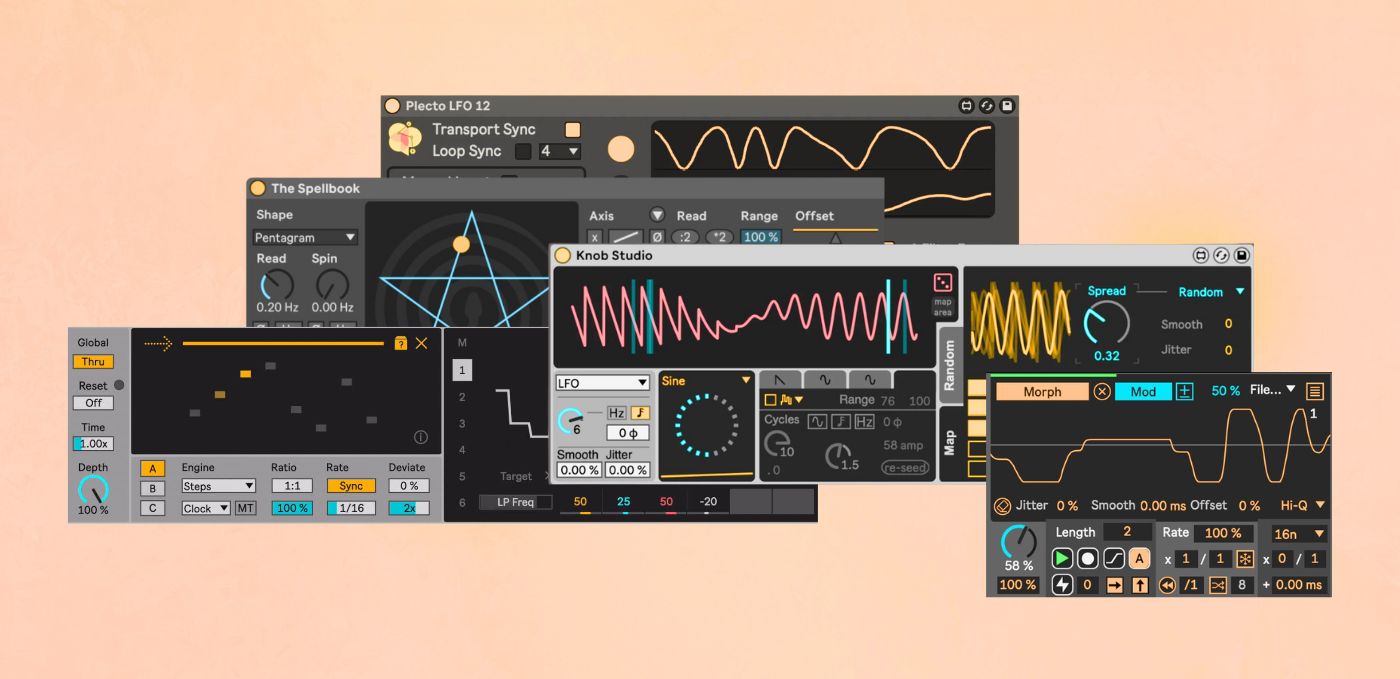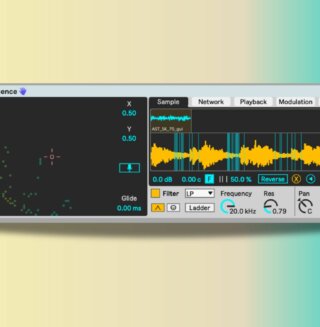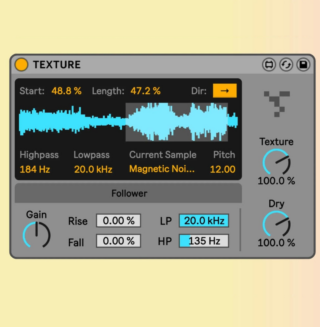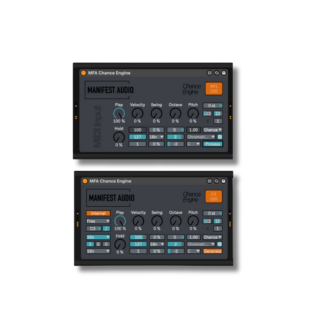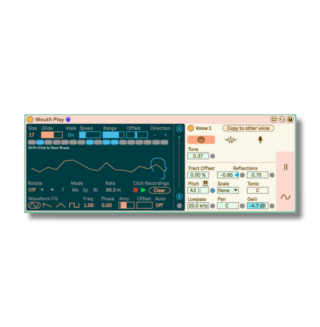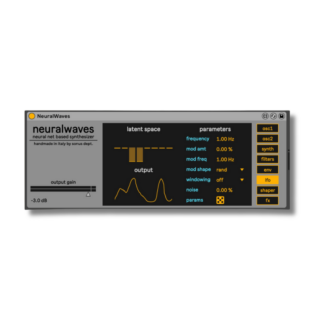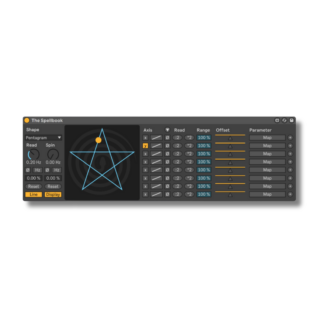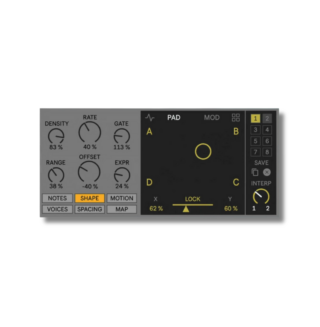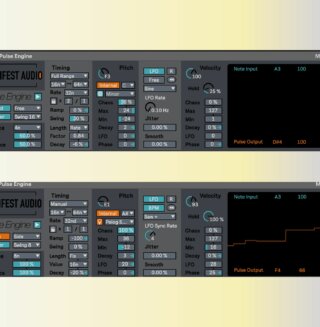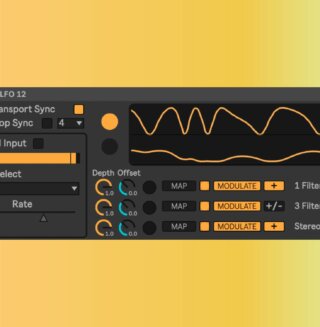Of all the powerful features of modern DAWs, modulation has recently emerged as an increasingly critical tool for producers, performers, and sound designers. For those no longer satisfied with static automation alone, digital modulators enable creators to craft intricately dynamic sounds with a mind of their own.
So what is modulation, exactly? In synthesis lingo, modulation can simply be translated as change over time. Modern modulation emerged with analog synthesis, where LFOs and envelope generators were first used to control — or modulate — parameters such as pitch, filter cutoff, or amplitude. As technology advanced, virtual synthesizers, effects, and plug-ins incorporated more complex modulation options — but they remained mostly confined to individual devices.
Recent innovations with Max for Live and Bitwig have marked a significant shift in the modulation landscape. Merging the freedom of modular synthesis with the endless possibilities of a digital environment, this emerging class of plug-ins allows you to dynamically control nearly any parameter in a project.
Live 12 offers an abundance of flexible modulation systems that can be mapped to virtually any parameter within your host software environment, allowing you to dynamically bring your sounds to life with a range of methods from meticulous control, to the wild, unruly and wonderfully chaotic. Used judiciously, the resulting movement can add compelling depth and dimensionality to a production, engaging listeners in ways that would be difficult to achieve through other means.
AUTOMATION vs. MODULATION
Automation is designed to be fully controlled and utterly reliable, and change specified parameters the same way every time. In most cases, it must be recorded or programmed manually. Automation is what you should use when you want the contours of a parameter (say, volume or filter cutoff) to adhere to a specific slope at a particular section of your arrangement, and do so the same way every time.
Modulation can be similarly reliable — but to use it in such a way neglects its true power. In contrast, modulation is perhaps best applied to relinquish at least some control and allow the modulator to animate your sounds of its own accord, ideally in less predictable ways — especially when you utilize some of the random functions offered by many modulation devices.
Automation and modulation can be combined in powerful ways. For example, you could automate the intensity or rate of a modulator, so that the modulation itself remains less predictable, but its general character appropriately follows your arrangement.
On the other hand, if you really want to get experimental with your tweaking, you can take it to the next level by modulating your modulators. For example, try controlling the rate of an LFO with the slope of an envelope, or controlling the rate of a randomizer with the curve of an LFO. Now we’re cooking.
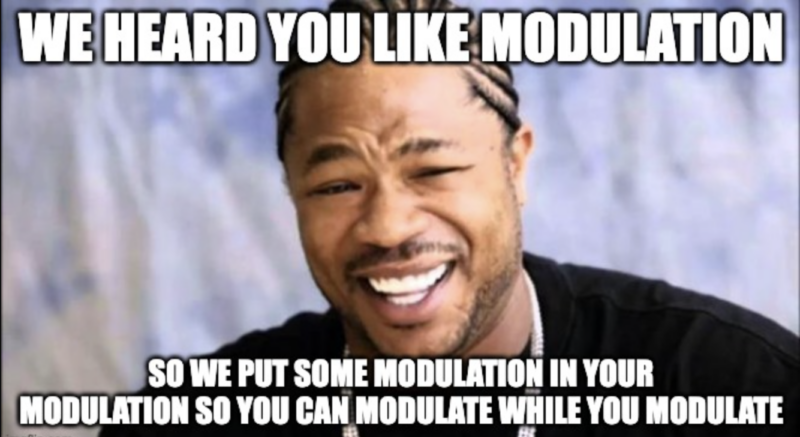
THE MAX FOR LIVE MODULATION BOOM
While Bitwig’s innovative modulators can be combined in myriad ways, Max for Live extends these possibilities by allowing independent developers to craft highly customized modulation devices inspired by a variety sources, opening new possibilities for inspiration and movement.
Novel Music’s Ian Dicke draws a parallel between modulation in electronic music and the palpable vibrance of instrumental performance. “Modulation is what transforms electronic music into a living and breathing organism,” he states. This concept guided his development of Staircase, a multi-lane step sequencer originally designed to animate Ableton’s Drift synthesizer. Staircase enables users to create non-cyclical yet musical patterns by combining modulation sequencing with various types of MIDI note input.

“Early computer music, such as the innovative work of Max Mathews, had very primitive forms of modulation available, thus the sound itself was rather lifeless. In this modern era, we have unprecedented control over every parameter, which can lead to decision-fatigue. While modulation has always been important in electronic music, it is now essential for us to embrace it, so we may break the shackles of constant knob tweaking. Modulation leads us to such inspiring sounds that we may not have arrived at alone. With the growing prevalence of sophisticated modulation tools on the market, I expect we’ll be hearing even more lively sounds in the future.” — Ian Dicke, Staircase
Alessandro Miracapillo, better known to the Max for Live community as aylesim, views modulation as a tool for both control — and discovery. His approach involves using algorithms to introduce controlled randomness into his music, allowing for unexpected outcomes. His impressively full-featured Knob Studio offers dynamic waveform manipulation and parameter mapping capabilities with moving functions that blend together, enabling a unique and elegantly-designed combination of precise control and exploratory sound design that encourages experimentation.
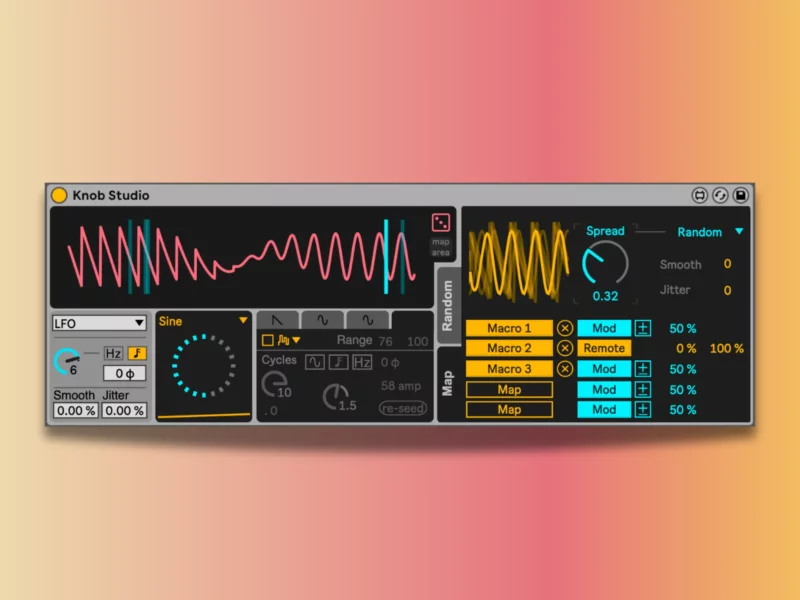
“I take a serendipitous approach to music production. My process mainly involves playing with Max/MSP patches, where I like to turn sets of rules into algorithms. These algorithms organize parameters using controlled randomness — they follow specific rules, but still let me discover new things. In this process, modulations are key. They become an extension of my intentions, which I’ve already translated into algorithms. At the same time, they allow me to make choices I might not have made on my own. For me, modulations are both a tool for control and a means of discovery. They help me bridge the gap between my initial ideas and unexpected outcomes. This lets me push boundaries and explore new sonic territories as a kind of creative partner.” — Aylesim, Knob Studio
Speaking of experimentation, Steffan Ianigro’s Plecto LFO stands out for its use of Continuous Time Recurrent Neural Networks to produce organic, lifelike modulations. Inspired by the concept of Artificial Life, but without training on any data sets, Plecto LFO enables fluid manipulation of compositional layers. Even though the resulting modulation is incredibly dynamic and seemingly unpredictable, Ianigro is quick to clarify: “The algorithm itself is deterministic, meaning it will produce the same behaviors each time — unlike modulation based on randomness.” This deterministic component allows for consistent yet lifelike modulation in both live performances and, notably, studio work — without worrying one export will vary from the next, as is the case with most noise-based random modulation.
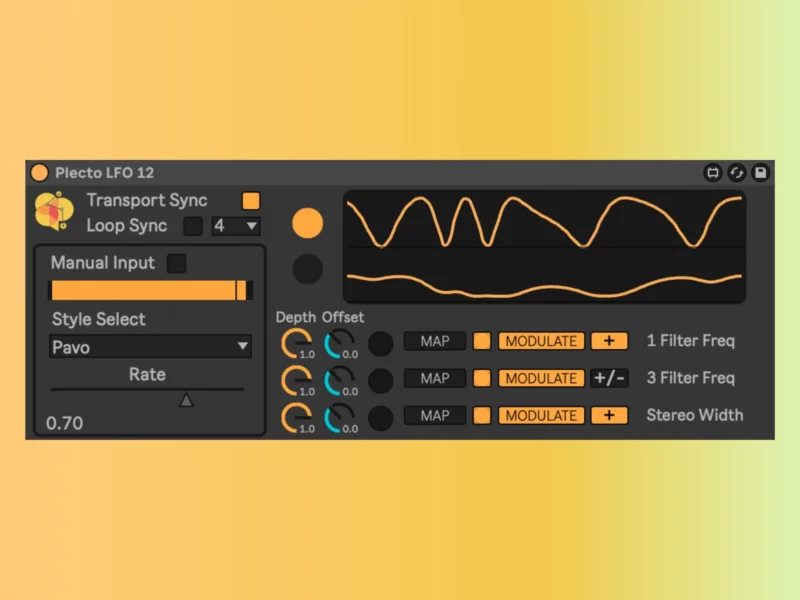
“One of the challenges of creating electronic music is manipulating different compositional layers while maintaining granular and expressive control, especially during improvised performances… I like to solve this problem by offloading control of different instruments and effects to modulators that can manipulate parameters for me, so that I can focus on higher-level elements of the work or improvise in collaboration with these modulators.” — Steffan Ianigro, Plecto LFO
Manifest Audio’s Noah Pred, creator of Mod Squad emphasizes the importance of asynchronous, interconnected modulation. “Automation is great for fixed dynamics, but with the asynchronous, inter-relational possibilities opened up by modulation, you can really bring a production to life,” he states. Mod Squad Pro was designed as a dynamic ecosystem, capable of interlinking various parameters and controlling devices in innovative ways. His Sonification Tools are a finalist for this year’s MIDI Innovation Awards, and include Data Mod, a modulator that uses raw data from any source to generate freely assignable modulation, but you can grab the free version of Mod Squad here. The Pro version features a highly-customizable LFO with freehand waveform drawing and intricate modulation sequencing, among other features; it also comes with a gestural modulation looper that can loop and remix any knob tweak.
One tip from Pred is to forego the temptation to pile on additional audio effects and opt for modulators instead. “Before resorting to the familiar instinct of adding effects when your sound isn’t quite cutting it, instead, try adding different modulators until at least half, if not more, of your synth or instrument parameters are being modulated — more often than not, you’ll be blown away by the results. Like awakening a beast.” Pred also urges producers to take full advantage of Max for Live modulators’ multi-mapping feature, which is accessible by clicking most modulators’ extra menu icon.
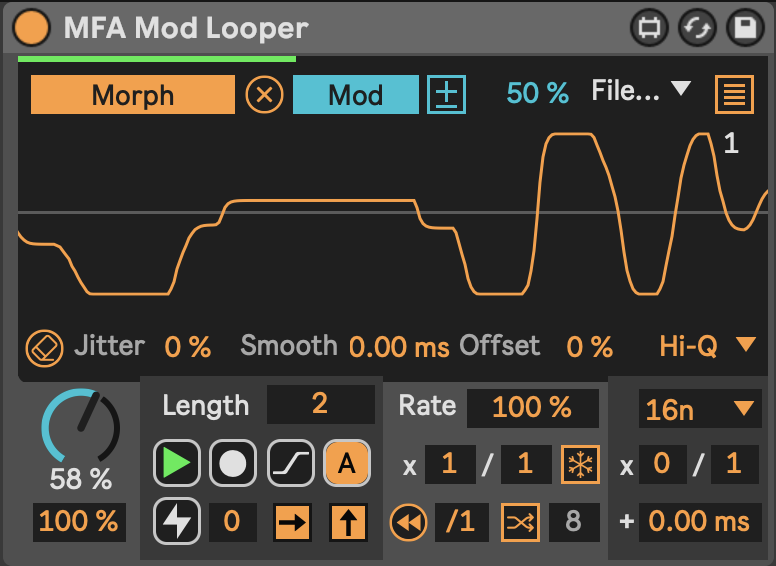
“I’m interested in the inter-relational possibilities opened up by multi-mapping: when one device parameter changes, another parameter on an otherwise unrelated instrument changes too. By default these changes move in the same direction, but pulling a bipolar mapping in the opposite direction, they can also diverge. Either way, the sort of implied interlinking offered by multi-mapping can generate captivating sonic interactions – a living, breathing sum greater than any individual sound.” — Noah Pred, Mod Squad Pro
These are just a few examples of creative Max for Live modulators that recently arrived; another classic example would be Hypnus’ Spellbook modulator, which harnesses sacred geometry and occult symbols to make modulation magic.
Looking ahead, Aylesim envisions a future where modulators inspire creativity and discovery: ”I like the idea of seeing more and more producers experimenting with an approach tied to discovery and randomness.”
Mindful of emergent AI tools, Ianigro shares, “The various tools for modulation that are available show the potential of accepting a machine as a collaborator in the compositional process, and I feel this will continue to be prevalent in the future as musicians seek to explore new sounds and interactions.”
Whether through controlled randomness, lifelike neural networks, dynamic ecosystems, or purposeful combinations, modulation is redefining the boundaries of what’s possible in the modern studio, how producers think through their arrangements, and how sound designers bring their work to life. In many ways, it seems the future of production will be shaped at least in part by the innovative possibilities of digital modulation.
